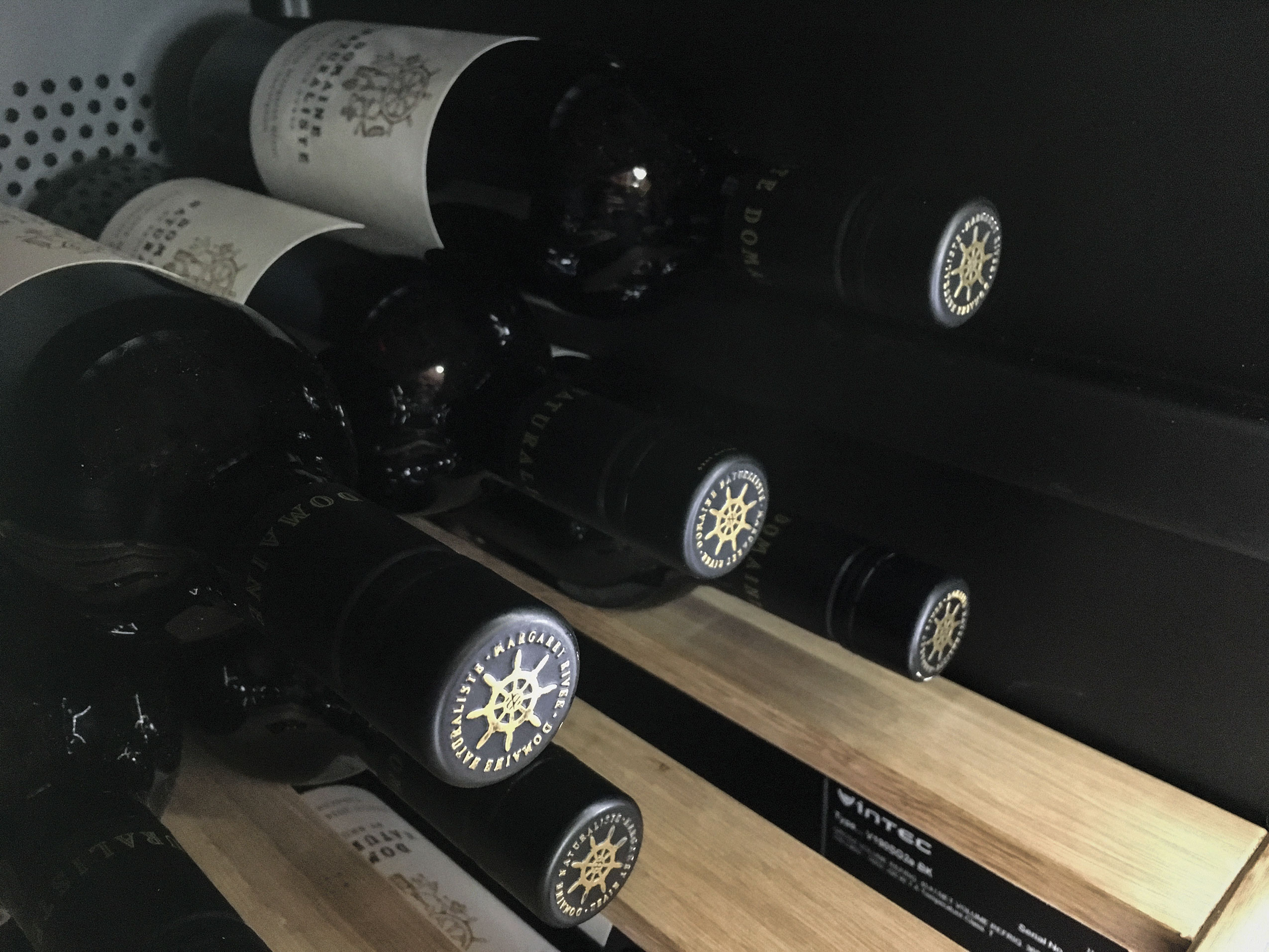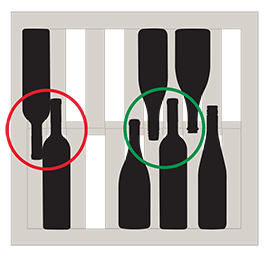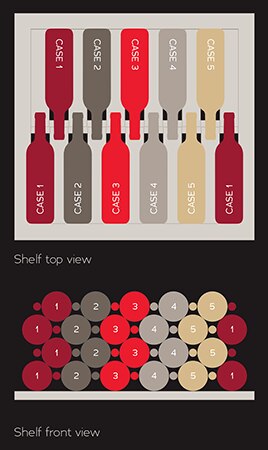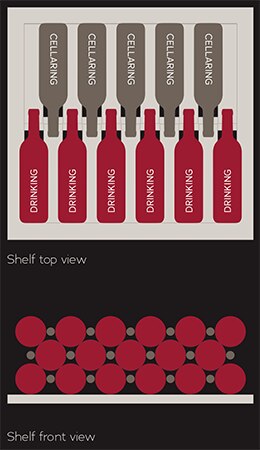
Tips for organizing your cellar and stacking your bottles
1 Stacking different shapes and sizes

The first thing to know is that the capacities of all wine cabinets are expressed based on standard 750mL Bordeaux (shape and size). This is a standard among all wine cabinet and wine cellar manufacturers, as for a very long time it was the most common bottle shape.

Although many bottles may look like standard Bordeaux bottles, most actually considerably vary in terms of diameter, height, length of the neck and shoulder etc. – even among bottles from the Bordeaux region! Here’s the standard 750mL Bordeaux shape and size which all wine cabinet capacities are based on:
Obviously, wine cabinets can accommodate different shapes and sizes, but sometimes at the detriment of the maximum capacity.
2 Reaching maximum capacity
In order to reach maximum quantity in most Vintec wine cabinets, bottles must lie with the necks comfortably interlocking as seen in the diagram.

Vintec's Perfect Cradle™ Shelving allows you to store comfortably, neck-to-neck, most wine bottle shapes. In addition, the distance between shelves is optimized to fit a large variety bottles, including Champagne, without needing to remove any shelf.
However, if you notice that when stacking your cabinet some bottles don't fit comfortably opposite to each other, you may need to lay more suitably shaped bottles opposite .
3 Stacking for accessibility

When stacking bottles in your cabinet, it is practical to keep bottles from the same case together. See the diagrams above where bottles from the same case are represented in the same colours.
Storing same-case bottles in a vertical stack enables you to have easy access to all your different wines, and also facilitates interlocking bottles by laying suitably shaped bottles neck-to-neck.
4 Stacking your wines for aging

When filling your cabinet, we suggest stacking the bottles you wish to cellar and mature at the back of the shelves, and the wines you wish to consume in the short-term at the front.
We then recommend that while doing your required annual cellar maintenance (see "Six expert tips for cellar care"), you re-evaluate which wines should be moved forward having approached drinking age, and which bottles should remain stored away for longer periods.

